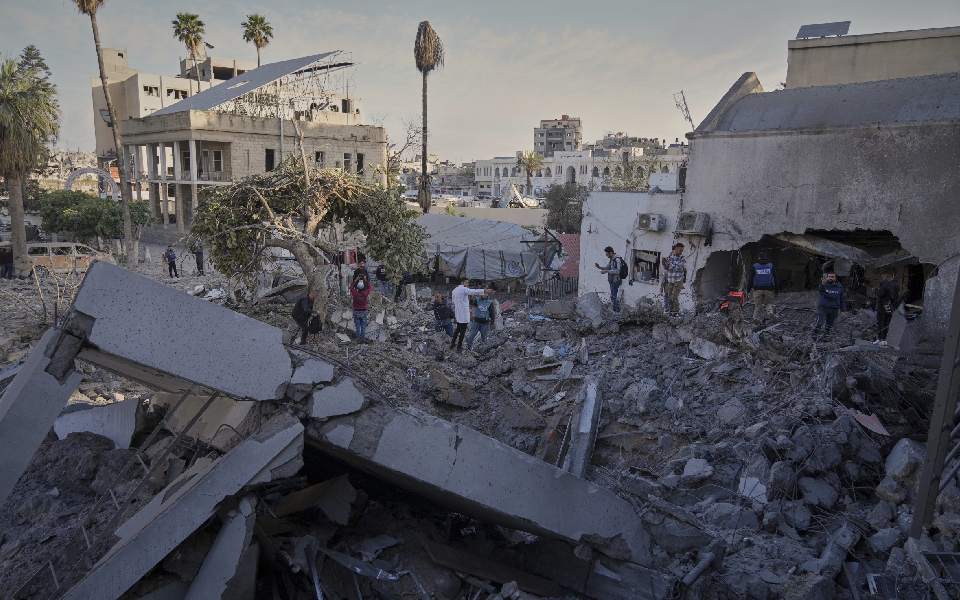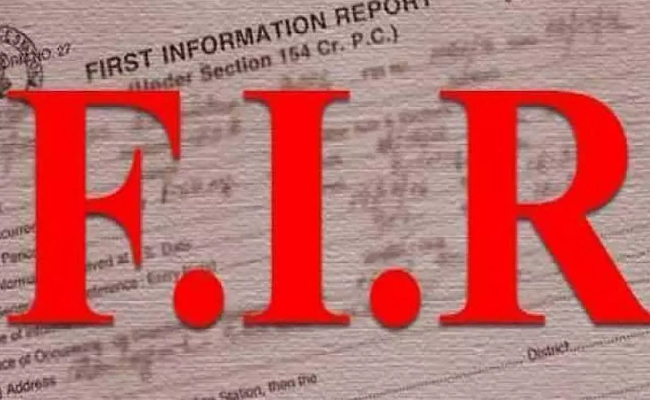Deir Al-Balah (Gaza), Apr 13 (AP): Israel struck a hospital in northern Gaza early Sunday, forcing patients to evacuate as attacks intensified across the Strip.
The pre-dawn strike hit Al-Ahli Hospital in Gaza City, after Israel issued an evacuation warning, according to Gaza's ministry of health. One patient died during the evacuation because medical staff were unable to provide urgent care, it said.
The hospital, run by the Diocese of Jerusalem, was attacked on Palm Sunday, which commemorates Jesus' entry into Jerusalem.
Hours later, a separate strike on a car in Deir al-Balah in central Gaza, killed at least seven people, according to staff at the morgue of the Al-Aqsa Martyrs Hospital, which received the bodies.
Israel said it struck a command and control centre used by Hamas at the hospital to plan and execute attacks against Israeli civilians and soldiers. It said prior to the strike, steps were taken to mitigate harm, including issuing warnings, and using precise munitions and aerial surveillance.
The strikes came hours after Israel's defense minister said that military activity would rapidly expand across Gaza and that people would have to evacuate from “fighting zones.” Israel also announced Saturday the completion of the Morag corridor, cutting off the southern city of Rafah from the rest of Gaza, with the military saying it would soon expand “vigorously” in most of the small coastal territory.
Israeli authorities have vowed to pressure Hamas to release the remaining 59 hostages, 24 believed to be alive, and accept proposed new ceasefire terms.
Director of Al-Ahli Hospital, Dr. Fadel Naim, said they were warned of the attack before it was struck. In a post on X, he wrote that the emergency room, pharmacy and surrounding buildings were severely damaged, impacting more than 100 patients and dozens of medical staff.
The health ministry said the strike destroyed the ward for outpatients and laboratories and damaged the emergency ward.
Medical facilities often come under fire in wars, but combatants usually depict such incidents as accidental or exceptional, since hospitals enjoy special protection under international law. In its 18-month campaign in Gaza, Israel has stood out by carrying out an open campaign on hospitals, besieging and raiding them, some several times, as well as hitting multiple others in strikes while accusing Hamas of using them as cover for its fighters.
Last month Israel struck Nasser Hospital in Khan Younis city, the largest in southern Gaza, killing two people and wounding others and causing a large fire, the territory's health ministry said. The facility was overwhelmed with dead and wounded when Israel ended the ceasefire with a surprise wave of airstrikes.
The war started after Hamas killed 1,200 people during its Oct. 7, 2023, attack, mostly civilians, and took 250 people captive, many of whom have been freed in ceasefire deals.
More than 50,000 Palestinians in Gaza have so far been killed in Israel's retaliatory offensive, according to the health ministry there, which does not differentiate between combatants and civilians in its count but says more than half of the dead are women and children.
Let the Truth be known. If you read VB and like VB, please be a VB Supporter and Help us deliver the Truth to one and all.
Bengaluru (PTI): The Special Court for People's Representatives on Thursday expressed displeasure with the Lokayukta for failing to file the final investigation report in the MUDA land site allotment case, involving Chief Minister Siddaramaiah.
Despite clear directions from the court to submit the final "B report" by December 18 in the Mysuru Urban Development Authority (MUDA) case, the Lokayukta placed only an interim progress report.
Questioning the delay, the judge sought an explanation from Lokayukta officials, who stated that the final report could not be filed as prosecution sanction against certain officials was still awaited.
During the proceedings, the court asked the Special Public Prosecutor to produce the case diary. The prosecutor submitted that the report could be placed before the court in a sealed cover if additional time was granted.
This was strongly opposed by the complainant, activist Snehamayi Krishna, who alleged that there was an attempt to mislead the court.
ALSO READ: Three arrested for gangrape, blackmail of college student in Bengaluru
Krishna further contended that no meaningful investigation had been conducted and accused the authorities of shielding the accused. He also claimed that no witnesses had been examined, despite specific directions issued by the court.
Observing that it could not pass any order in the absence of a final investigation report, the court adjourned the matter.
The special court deferred its orders on the petitions challenging the Lokayukta's B report and the clean chit granted to CM Siddaramaiah and three others to December 23.
The Lokayukta Police in February had given a clean chit to Siddaramaiah, his wife B M Parvathi, and two other accused in connection with the case, stating that allegations against them have not been proven due to lack of evidence.
Siddaramaiah, his wife, brother-in-law B M Mallikarjun Swamy, Devaraju -- from whom Swamy had purchased a land and gifted it to Parvathi -- and others have been named in the FIR registered by the Lokayukta police on September 27, 2024.
In the site allotment case, it is alleged that 14 compensatory sites were allotted to Siddaramaiah's wife in an upmarket area in Mysuru (Vijayanagar Layout 3rd and 4th stages), which had higher property value as compared to the location of her land which had been "acquired" by MUDA.
The MUDA had allotted plots to Parvathi under a 50:50 ratio scheme in lieu of 3.16 acres of her land, where it developed a residential layout.
Under the controversial scheme, MUDA allotted 50 per cent of developed land to the land losers in lieu of undeveloped land acquired from them for forming residential layouts.
It was also alleged that Parvathi had no legal title over the 3.16 acres of land at survey number 464 of Kasare village, Kasaba hobli of Mysuru taluk.





